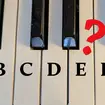What is the difference between relative and perfect pitch?
10 September 2019, 10:09 | Updated: 10 September 2019, 10:37

What Is Perfect Pitch? | Discover Voices | Classic FM
It’s a phrase we hear so much: “this singer has perfect pitch!” But what does that term actually mean? As countertenor Kangmin Justin Kim explains, there are actually two distinct types pitch that people can have to allow them to identify notes from hearing them: absolute perfect pitch, and relative pitch.
Perfect pitch is, essentially, the ability to sing or play any note on the spot, with no former guiding note.
But we can categorise this innate sense of pitch further – as either absolute perfect pitch or relative pitch – depending on if someone has a standalone sense of what any note is, or if they know what it is compared to another note, respectively.
What is absolute perfect pitch?
If you happen to have absolute perfect pitch, you can basically identify any musical note without a reference point, and tell if something is even remotely out of tune without needing to hear a note for reference beforehand.
In the professional classical music world, this means in practical terms that you can hear the very subtle and small differences in tuning from two notes that might, on paper, be the same.
It is, some musicians say, both a blessing and a curse – any ambient noise could, in theory, be out of tune in the head of a musician with absolute perfect pitch.
“It’s not necessarily as perfect as it sounds,” says Kangmin Justin Kim (watch above). “Hearing a note and knowing what that is, is very different from producing the right note.”
He’s right: for singers especially, the note you hear in your head might not be exactly the same as the one you sing, but having perfect pitch of either sort means you can more easily get closer to the right note.

What is relative pitch?
Put simply, musicians can gain and improve their relative pitch by focusing on one particular note and using it as an anchor point whereby they can identify other related notes.
For example, countertenor Kangmin Justin Kim explains that his childhood violin teacher told him “as a violinist, I should know where my 440A is.”
By constantly using that note to tune (an A is the most common tuning note for orchestras), you get to know where it is and so recognise it when you hear it.
In many cases, relative pitch can be related to the instrument you play: for example, many rock and pop guitarists will sometimes unconsciously have perfect pitch on an ‘E’, the lowest and highest strings of the guitar.
For classical musicians it’s usually an A.
For complicated material with non-traditional melodies and harmonies, a highly developed relative pitch can be very useful – when you’re making unconventional leaps, especially, that initial reference note is invaluable!
So what’s the difference?
Here’s a simple way to think about it: for a singer, absolute perfect pitch means you can pluck an existing note out of the air and sing it in tune very accurately, while relative pitch means that a singer could hear an existing note and then use it as a reference point for every other note they sing.
Read more: What actually is perfect pitch – and how do I get it? >
Do musicians need to have perfect or relative pitch?
Having any real sense of pitch, whether relative or absolute, can be very useful for a musician and is definitely an advantage for singers, string players, oboists and other musicians for whom variable tuning can be an issue.
But absolute perfect pitch is not essential. Plenty of successful musicians – professional or otherwise – don’t have perfect pitch and are likely to develop a relative pitch of sorts, but not always.


























